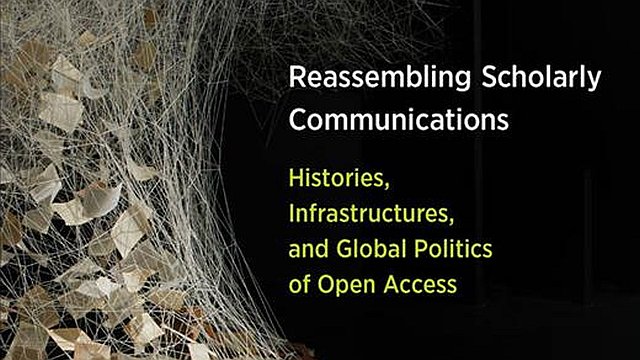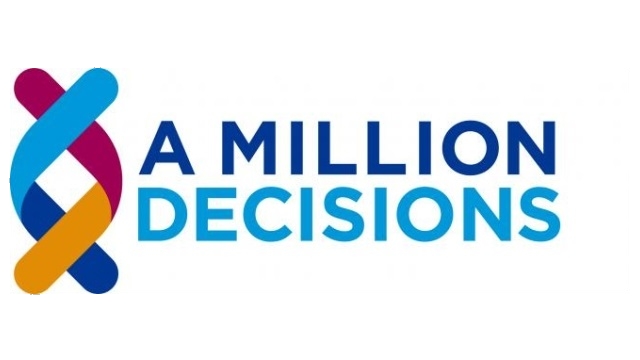
Open access to scholarly knowledge in the digital era (chapter 4.3): Digital humanities and print-centered communications
This article is chapter 4.3 in section 4 of a series of articles summarising the book Reassembling Scholarly Communications: Histories, Infrastructures, and Global Politics of Open Access.
Scholars in the digital humanities are curious about new computer-mediated analysands, and are applying computational analysis methods to text, image, sound, and video corpora. However, as Dorothea Salo exposes in the third chapter of the archives and preservation section, these scholars discover that fitting their work into the humanities’ present print-centered scholarly communication system carries serious challenges.
How digital humanities changes humanities evidence and its stewardship
Humanist scholarship relies on a reliable past of carefully preserved cultural materials, but Salo alerts that many analogue evidence techniques are wholly contained within the skull of the humanist scholar, and the assumption that past evidence must be available to future scholars tends to go unnoticed.
Digital-humanist modes of research such as corpus analysis add significant complexity to the adducing of evidence, and subsequent scholars may reasonably suspect analysis error, bugs in analysis software, or actual skullduggery to “prove” a point.
Digital objects and digital tools are notoriously prone to change or disappearance without warning or trace. For those who build or curate their own digital artefact collections, data disappearance is a daily reality. Salo advises that digital preservation is not as impossible as it is sometimes portrayed by people who have never done it, given appropriate forethought, infrastructure, staff, budget, and a favorable legal situation. Most digital preservation problems are organizational priority, local infrastructure, and funding problems.
Digital objects and collections thereof rarely reach a clear point of completion or immutability, and therefore do not easily fit into print publishing workflows.
Open access to preserved materials relevant to humanities research adds additional considerations, often complex and difficult ones. Copyright, cultural appropriation, and colonialism may also block access.
Print-centered monograph publishers tend to have little internal capacity for digital preservation and zero intent to build any. They have therefore declared outside their purview the preservation of the digital scholarly evidence underlying the digital humanities texts they publish. Scholarly societies have adopted the same out-of-scope stance toward digital preservation as print monograph publishers.
Commercially available storage services such as Dropbox are not an acceptable alternative for the long-term preservation of digital scholarship and scholarly evidence, and independent nonprofit organizations such as the Internet Archive operate reasonably trustworthy digital preservation infrastructure at substantial scale, but many humanists’ collections of digital objects fall outside such organizations’ missions and policies.
Salo alerts that libraries, archives, and museums are unevenly prepared and funded to take on the work of preserving digital evidence, leaving many digital humanists with nowhere to turn to preserve their evidence collections.
Libraries at research-intensive institutions are often scared off from considering digital preservation a priority, and those that have are often unable to overcome internal staff resistance. Few libraries in teaching-focused institutions have built flexible, large-capacity, scholar-centric preservation infrastructure and associated staff.
Some academic libraries offer institutional repositories, but they are technologically insufficient to present many humanists’ evidence collections usefully, and some libraries’ policies exclude digital humanists’ evidence collections from these platforms.
Central campus IT never has an adequate digital preservation solution, rarely if ever considering digital preservation part of its mission, and commonly makes three classic digital preservation errors: assuming that only tenured or tenure-track faculty have digital objects to preserve, considering storage and backup the whole problem, and deciding on perpetual-payment business models.
The challenge for digital humanists to secure digital preservation for their products and the evidence they collect often reduces to a problem of voice and numbers, as most institutions investing anything at all in the digital humanities have only one to a mere handful of digital humanists on the faculty.
The considerable up-front expense and effort involved in bootstrapping a digital preservation program only worsens the persuasion challenge faced by digital humanists. Grant funding is not well suited to solving long-term sustainability and infrastructural problems.
Whether humanists can preserve their collections of digital evidence for future scrutiny depends on local campus priorities. Research institutions are more likely to have appropriate technical and legal infrastructure, digital librarians, and archivists, and funding earmarked for preservation of locally grown digital materials than teaching-focused institutions.
How humanities publication practices enforce text hegemony
The current system of humanist scholarly communication relies on print monographs, mostly print journals, and their publishers. Salo warns that unless and until this situation changes, the humanities cannot welcome or support digital humanities scholars.
Many humanists still insist on print publication of text, but they require publication through a highly circumscribed set of market-based actors. This creates a collective intellectual and process monopoly fenced in by copyright law and tenure and promotion systems.
The digital humanities have been unable to step away from print publication because of the insistence on print publication by humanities internal career processes. Many tenure-track digital humanists shoulder the doubled research burden of writing a print monograph or a set of journal articles over and above their digital humanities research output. Many humanities fields advise their students against making their dissertations openly accessible, and this has slowed the adoption of open access not only in the humanities, but across academe altogether.
Senior scholars are hard to blame for enforcing print hegemony, but the Modern Language Association (MLA) response to the problem is a stark demand that digital humanists make non-texts intelligible to colleagues still textually bound, abandoning any responsibility to learn about digital humanities research and its products. Digital humanists must ask about evaluation and support, negotiate and document their role in the non-text product, and document and explain their work. Sometimes this extra explanatory work accomplishes nothing.
Salo asks: Why is it invariably digital humanists’ burden to explain their non-text research output, rather than their colleagues’ responsibility to learn to understand it and the research modes that produce it?
Conclusion
In summary, Salo states that publishers’ intransigence, library unpreparedness, and humanist allegiance to print forms of research communication distort scholarly communication systems, thereby excluding and disadvantaging digital humanists and preventing migration to more open and likely more sustainable digital modes of publication and dissemination.
Next part (chapter 4.4): The dangers of open access archives.
Article source: This article is an edited summary of Chapter 151 of the book Reassembling scholarly communications: Histories, infrastructures, and global politics of Open Access2 which has been published by MIT Press under a CC BY 4.0 Creative Commons license.
Acknowledgements: This summary has been prepared with the assistance of Wordtune Read.
Article license: This article is published under a CC BY 4.0 Creative Commons license.
References:
- Salo, D. (2020). Is There a Text in These Data? The Digital Humanities and Preserving the Evidence. In Eve, M. P., & Gray, J. (Eds.) Reassembling scholarly communications: Histories, infrastructures, and global politics of Open Access. MIT Press. ↩
- Eve, M. P., & Gray, J. (Eds.) (2020). Reassembling scholarly communications: Histories, infrastructures, and global politics of Open Access. MIT Press. ↩




